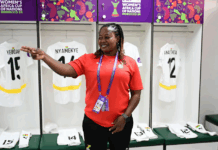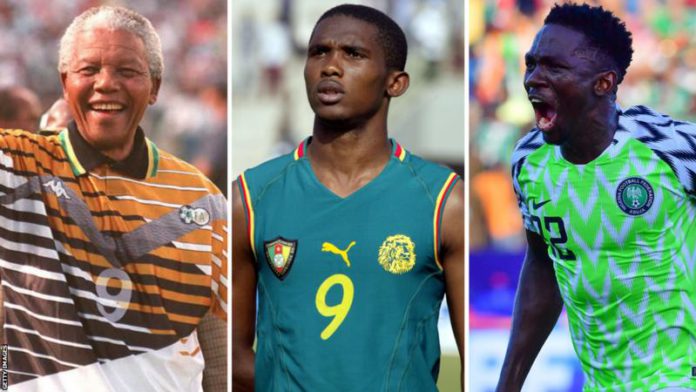
When any football tournament rolls around, some supporters are just as concerned about what strip their side will be wearing as who will be in the starting XI.
The Africa Cup of Nations (AFCON) has dished up plenty of sartorial highlights over the past 30 years of the continent’s showpiece event.
And, with retro kits back in fashion, several have become collector’s items.
The 2023 AFCON kicks off in Ivory Coast on 13 January and BBC Sport Africa has put together a tailor-made list of eye-catching shirts with input from Josh Warwick, the co-founder of the Cult Kits website.
Cameroon 2002 (home)

Where else to start than a kit which was banned by world governing body Fifa?
Back in 2002, Cameroon and Puma released a sleeveless shirt which was unveiled at Afcon in Mali.
“The players didn’t know we would play with a shirt with no sleeves,” Indomitable Lions midfielder Eric Djemba-Djemba told BBC Sport Africa.
“When we came to the dressing room we said ‘Wow, this is a new generation of shirt’. When we went onto the pitch the world was watching and it became famous.
“Everybody in Africa wanted to wear that shirt.”
But Fifa were having none of it.
“They promptly banned the basketball-style jerseys, forcing the manufacturer to hastily add some black sleeves to avoid punishment,” Warwick explains.
However, it caught the attention of tennis star Serena Williams, who wore a dress inspired by the shirt during the French Open that year.
Just two years later, Cameroon were at it again with the release of a onesie kit, with the shirt and shorts stitched together to make a single garment, for AFCON in Tunisia.
Warwick describes that all-in-one number as “an affront to decency” and Djemba-Djemba was not a fan either.
“It was difficult to wear,” the 42-year-old former Manchester United man said. “It was like you were going to swim in a wetsuit.”
Fifa duly banned that kit as well and, when Cameroon continued to wear it, they were docked six points in their 2006 World Cup qualifying campaign. The sanction was eventually lifted.
South Africa 1996 (home)
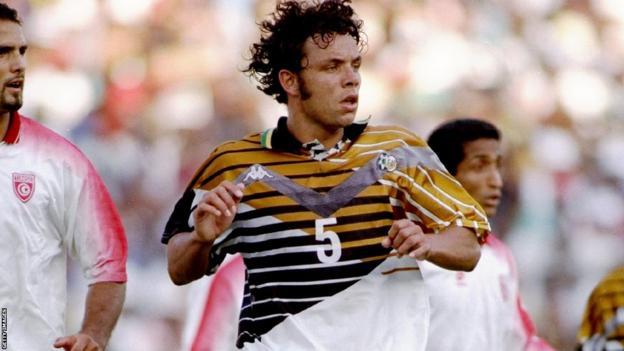
South Africa made their AFCON debut as hosts in 1996, after being excluded during the apartheid era, sporting a home kit Warwick describes as “absolute mayhem”.
The country’s then president, Nelson Mandela, wore the shirt as he watched Bafana Bafana win the trophy – just as he had done with a Springboks jersey at the Rugby World Cup final a year before.
“These days South Africa tend to wear yellow, but back in the 1990s their shirts were much more fun, this one being a case in point,” Warwick adds.
“In our opinion, Kappa were one of the great brands from that era and this is definitely one of their best.
“We don’t tend to get many of these and when we do they sell pretty quickly. It helps of course that Bafana Bafana won in 1996.”
Nigeria 2019 (home)
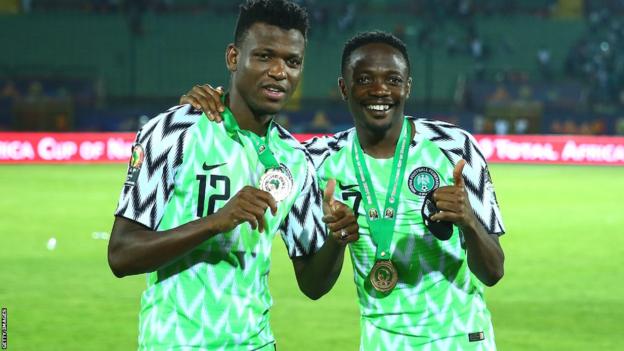
Known for their bold colours and patterns, Nigeria kits often fly off the shelves when released.
Their design for the 2018 World Cup led to long queues outside stores and almost broke the internet, with three million people pre-ordering the replica.
“If you know anything about football shirts, you’ll know just how insanely popular Nigeria’s 2018 jersey was,” Warwick says.
“Nike paid homage to the shirt worn by the Super Eagles at USA 94 – the first time the nation appeared at a World Cup – and it became an instant classic.”
The west Africans wore the same design at the 2019 AFCON in Egypt, where striker Odion Ighalo top-scored with five goals as Nigeria finished third.
Zambia 2012 (home)
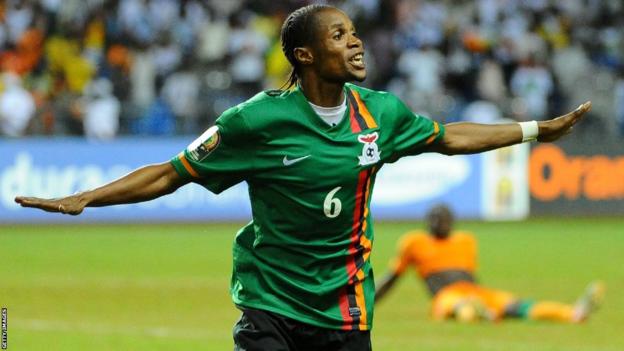
Zambia stunned the Africa, and the world game, when they defied the odds to lift the trophy in 2012.
French coach Herve Renard masterminded wins over Senegal and Ghana before the Chipolopolo upset Ivory Coast on penalties in the final.
“This is a nice shirt in its own right but it is elevated by the fact Zambia won AFCON, which remains one of the great footballing underdog stories,” Warwick says.
“Poignantly, their shoot-out victory took place in Gabon, close to the site of the 1993 plane crash that claimed the lives of the entire Zambian national team.”
Mali 2021 (home)
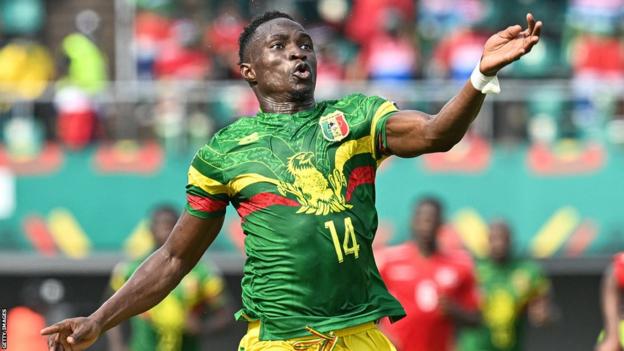
Rounding off our top five is Mali, another west African country who base their strips on the green, gold and red colours of their flag.
“Mali have had some of the most vibrant kits at AFCON for years, a number of which feature an eagle, the national symbol,” says Warwick.
“Big graphics like this just look great, don’t they?”
Best of the rest…
Tunisia 2010 (away)
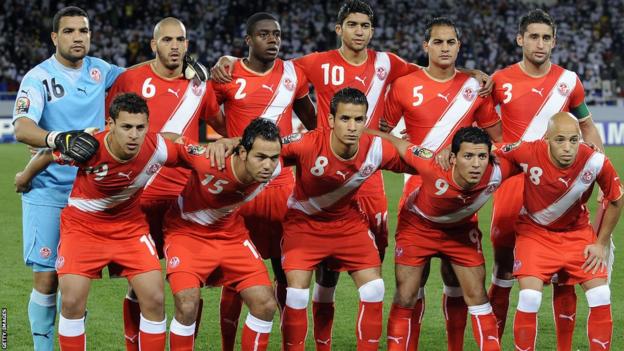
“It’s an absolute, undisputed fact that a sash makes any shirt look amazing and that’s definitely the case here,” Warwick says.
“The gold trim is a lovely addition, too.”
Ghana 2015 (home)

“Has there ever been a collar as cool as this? Definitely not,” according to Warwick.
“Ghana have got some great shirts in their back catalogue but this is up there with the best.”
Zimbabwe 2021 (away)
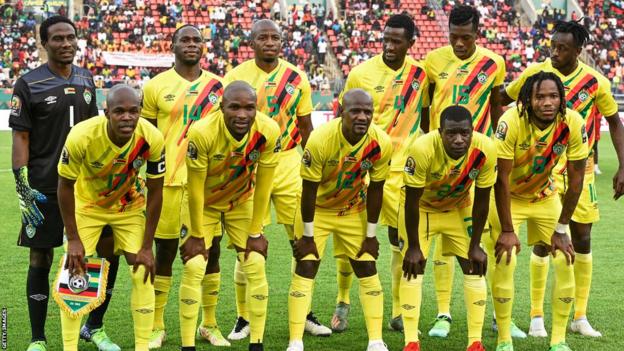
Warwick thinks this is “definitely one of the best AFCON shirts of recent tournaments”.
“The thick brushes of red, black, green and yellow are an entirely welcome assault on the eyes. Gorgeous.”
Angola 2010 (home)
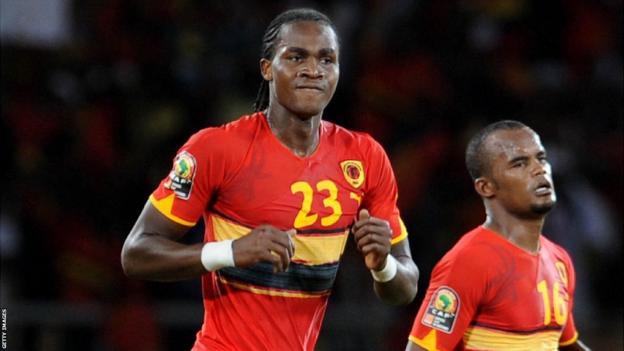
“There is a lot to like about this shirt: the painted horizontal stripes, the fact the badge and Puma logo are on the same side, and the graphic featuring a giant sable antelope, the national symbol of Angola.
“We need more antelopes on football shirts,” Warwick adds.
Uganda 2017 (home)

“Uganda used to wear yellow home shirts but switched to red in 2015. This is a really nice, simple jersey,” Warwick says.

